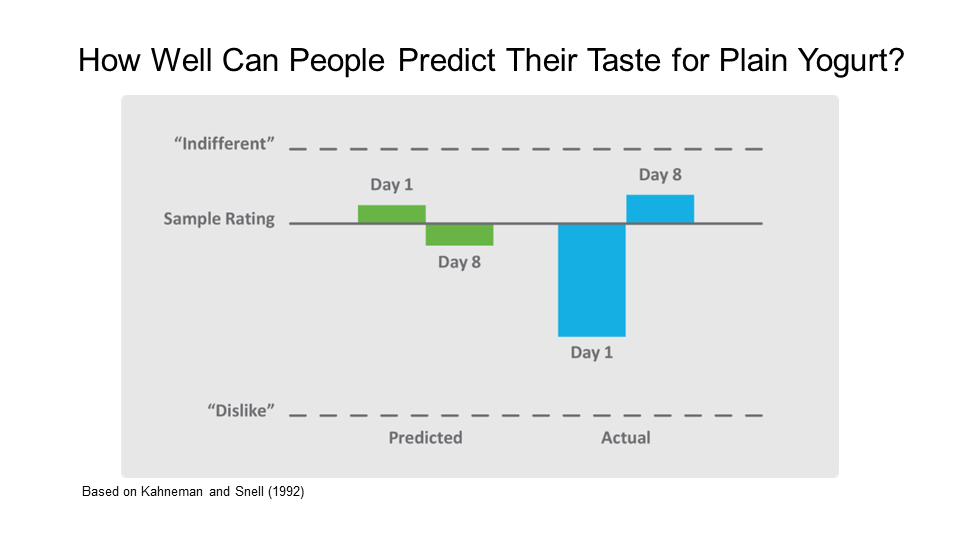Based on request from a Cornell student, last night I gave a talk to the Phi Sigma Pi National Honor Fraternity. The talk was entitled, “The Future You” and was themed around different career and leadership lessons that I experienced over more than three decades of work experience from engineer to management consultant to applied behavioral economics expert.
As part of the talk, I posed the question to students as to whether they could predict where they would be or what they would like, say several decades from now.
To set the context as to how well people can predict their tastes, I described a study by Kahneman and Snell. In the study, participants were first given a sample taste of plain yogurt and asked to rate how much they liked it. Participants then committed to eating a full serving of yogurt every day for about a week. They were also asked to predict how much they thought they would like the yogurt over the next week.
During the sampling phase, people had some dislike of the yogurt and predicted that their dislike would get even worse over the course of eating yogurt for a week.
However, what actually happened? People had very strong dislike of eating yogurt on Day 1 and the trend went in the opposite direction than predicted where liking improved over time instead of worsening. By the end of the week, while people were still somewhat negative on liking plain yogurt, by Day 8 their degree of liking was higher, even higher than what they reported during their first sample taste.

If we can’t predict our tastes for something simple like plain yogurt over the course of a short period of time like a week, then what are our chances of predicting things over a long horizon or even more modest time horizons?
My takeaways were the following:
- Forecasting is hard, even forecasting the future you.
- Interests, preferences, and skills develop and compound over time, so invest in them.
- Find environments where you can learn and experiment (e.g., sometimes longer drive tests can be helpful).
- To increase the chances of success and minimize the chances of overlooking blindspots, leverage 3rd party perspectives and out-of-the-box thinking tools from time to time.
Reference: Kahneman, Daniel, and Jackie Snell. “Predicting a changing taste: Do people know what they will like?.” Journal of Behavioral Decision Making 5, no. 3 (1992): 187-200.
